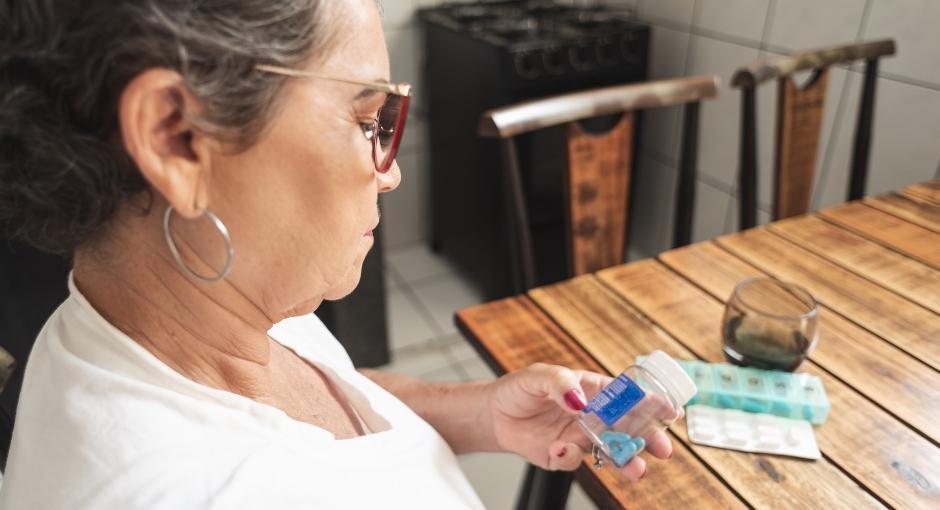Levodopa

The most potent medication for Parkinson’s disease (PD) is levodopa. Its development in the late 1960s represents one of the most important breakthroughs in the history of medicine. Levodopa alone can produce nausea and vomiting, but when combined with carbidopa this side effect is significantly lessened if not eliminated. The well-known combined carbidopa-levodopa name brand formulation is called Sinemet®. Many patients and providers will use carbidopa-levodopa and Sinemet synonymously.
Quick Facts
- Levodopa is often viewed as the first-line drug for the management of Parkinson's motor symptoms.
- Levodopa (in pill form) is absorbed in the blood from the small intestine and travels through the blood to the brain, where it is converted into dopamine.
- Levodopa is almost always given in combination with the drug carbidopa, which reduces or prevents the nausea that levodopa alone can cause.
- Carbidopa-levodopa is delivered in many forms, including immediate-release, controlled-release, or time-released. In addition to pills and capsules, it is also available as an intestinal gel (DUOPA) and inhaler (Inbrija).
Be Prepared
The Hospital Safety Guide is a resource for people with Parkinson's and their care partners filled with useful tools and information to prepare for and navigate a hospital stay.
Forms of Levodopa
Taking the right medication on time every time is critical to Parkinson’s symptom management. Due to various strengths and sizes, it is important that people with PD are aware which carbidopa-levodopa preparation they are taking. Be careful when renewing prescriptions at the pharmacy or when receiving medications in the hospital because the accidental substitution of a different formulation may lead to an under or over dose.
Common levodopa side effects include:
- Nausea
- Vomiting
- Loss of appetite
- Lightheadedness
- Lowered blood pressure
- Confusion
- Dyskinesia (extra movements)
- Hallucinations
- Sleepiness or sudden-onset sleep (uncommon)
- Impulsivity (uncommon)
Side effects can be minimized with a low starting dose when initiating treatment with any antiparkinsonian drug and increasing the dose slowly to a satisfactory level. This is particularly helpful in elderly people with Parkinson's whose tolerance for medications is often less than in younger persons. Taking drugs with meals can also reduce the frequency and intensity of gastrointestinal side effects, although some may find less benefit if taken with a high protein meal. For people who have persistent nausea or vomiting, adding extra carbidopa (Lodosyn) to each dose of carbidopa-levodopa can also help.
Nutrition and Levodopa/Sinemet
Most people have no problem taking medications with meals, but some experience less benefit if they take carbidopa-levodopa with a high protein meal (including meats, cheeses and other dairy products). When this occurs, it is recommended to only take carbidopa-levodopa along with non-protein foods or similarly 30 minutes before, or 60 minutes after eating a meal. This allows for quick absorption before food can interfere.
The absorption of levodopa may also be reduced when taken with iron supplements.
Nutrition
Explore our Diet & Nutrition page to learn how the right foods can optimize your medications.
Managing Nausea Caused by Levodopa/Sinemet
Ginger tea is a good choice for many people, because it often “settles the stomach”.
A graham or soda cracker along with ginger tea may help and are low in protein so should not interfere with the absorption of carbidopa-levodopa
If you cannot tolerate carbidopa-levodopa because of nausea or upset stomach, you may need to take it with food.
Visit our Constipation & Nausea page for more tips to tackle common Parkinson's digestion changes.
Delaying Use of Carbidopa-Levodopa
Levodopa may be extremely beneficial to those with Parkinson’s and can dramatically improve quality of life. Some people with PD have been reluctant to rely on carbidopa-levodopa, believing it to be a last resort. However, most neurologists agree that delaying treatment too long is unwise, and the Parkinson’s Foundation Parkinson’s Outcomes Project reports utilizing levodopa more than any other drug for Parkinson’s therapy. There is no reliable data that levodopa contributes to faster disease progression or produces damage to brain cells.
The decision about when to start carbidopa-levodopa is different for every person with Parkinson’s and requires consideration of potential benefits, risks, and the availability of alternatives.
Some people living with PD may experience extra, involuntary movements – known as dyskinesias – or more irregular "on-off" periods – known as motor fluctuations - when exposed to carbidopa-levodopa. These can be limiting and require adjustment in therapy.
Page reviewed by Dr. Chauncey Spears, Clinical Assistant Professor and Dr. Amelia Heston, Movement Disorders Fellow at the University of Michigan.


